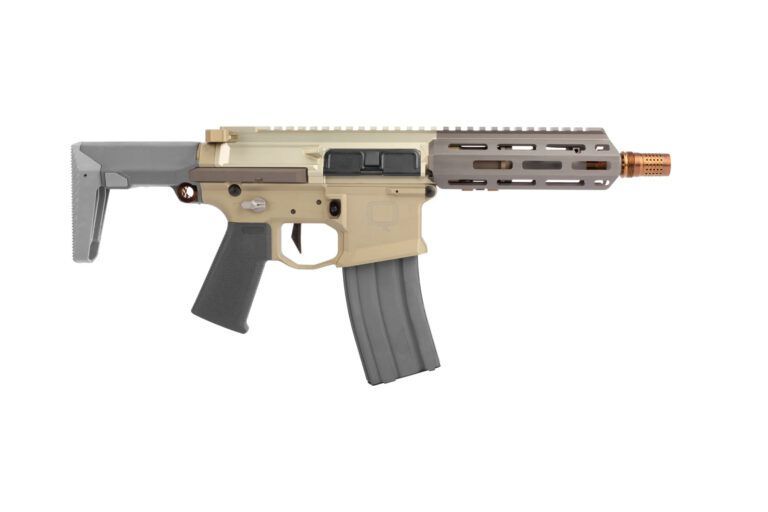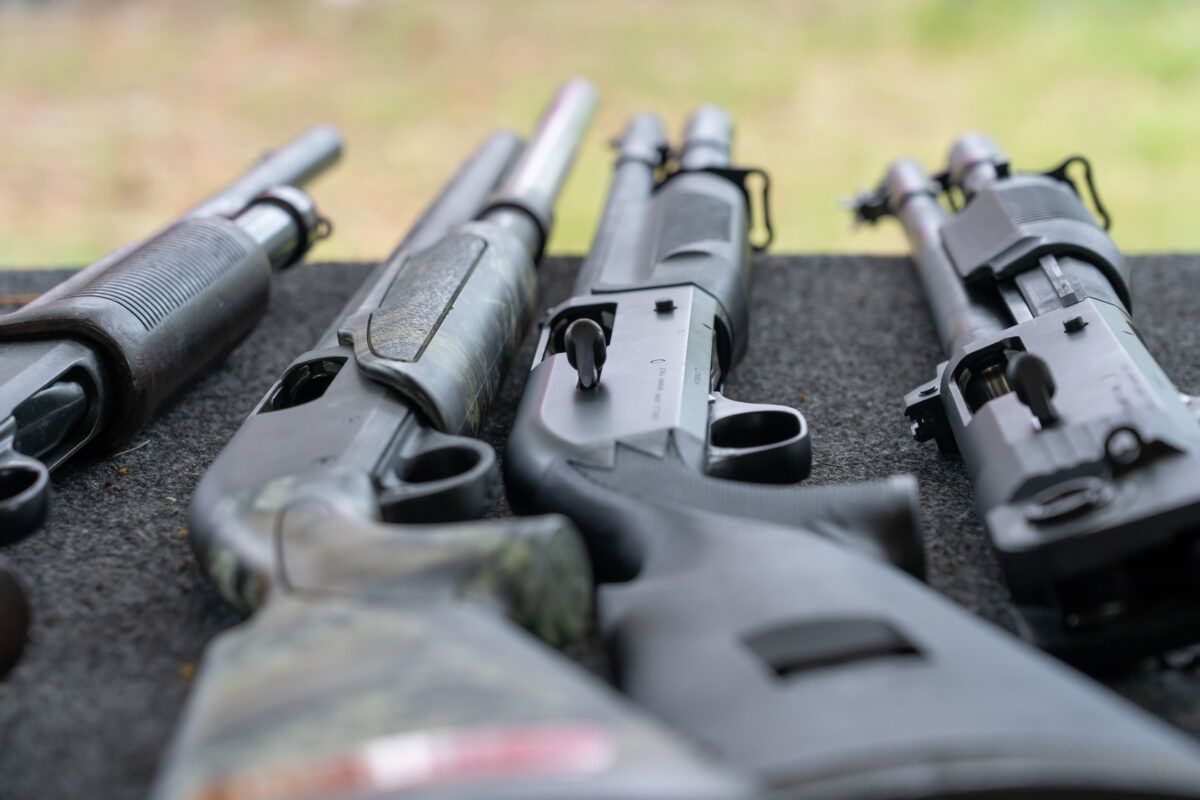AR-15 vs. Shotgun – Introduction
AR-15 vs. shotgun for home defense has long been a topic of heated discussion among firearm enthusiasts. Both offer compelling arguments for their utility in a home defense scenario. So which is the superior choice? This article offers a deep dive into each firearm’s merits and potential drawbacks.

The Cultural Divide
First things first, realize that a generational and cultural dimension underscores this longstanding debate. Also, realize that when it comes to arguing, it is going to be difficult to convince someone who does not want to be. The best approach is to try to figure out what is best for you and your situation. Some modern firearm aficionados champion the AR-15, with its military pedigree and contemporary design. Conversely, shotgun loyalists lean into the weapon’s versatile nature and longstanding heritage.
So, who is right? Well, like many things, it depends. Either can be a great choice, and the TL;DR about which is better is that both have their positives but it comes down to which one your are more comfortable with and have trained with more. This, in a large way, explains why both sides are so passionate about the topic, and often refuse to come around to the other’s point of view. If you think the shotgun is better because you like shotguns more than ARs, you’re right. The same applies to those who prefer the AR.
Heritage and Firepower
Again, when it comes to shotgun vs. AR, the fact is that both make a strong case, and both will work. The idea that one is somehow inherently better than the other is disingenuous. That said, if we’re keeping score, OR you’re new to firearms and trying to figure out which one to select and get trained with, let’s start first with the shotgun and some of the benefits it brings to the discussion:
- Legality & Versatility: The widespread legal acceptance of shotguns is a strong point in their favor. With pump-action or double-barreled shotguns generally legal across all 50 states, they present a universal choice. Their adaptability, transitioning easily from a hunting to a defensive weapon, further bolsters their appeal.
- Ease-of-Use: The shotgun excels in dynamic situations, such as targeting fast moving objects while in motion, especially in dim lighting. Additionally, it offers a higher accuracy rate for users under pressure, even if they’re not extensively trained. That said, you absolutely NEED training, no matter what you choose to defend yourself with.
- Affordability: Price often drives decision-making. Shotguns, with their relative affordability compared to quality carbines and cost-effective ammunition, are alluring for many budget-conscious consumers. You can spend a few hundred dollars or north of of 1,000 dollars on something like a Benelli M-series or Beretta 1300, or the newer, slightly less expensive a300.
- Fight Stopping Power: When discussing shotguns, the 00 buckshot frequently surfaces. This ammunition typically consists of eight to nine .30 caliber pellets, delivering a formidable punch upon firing. The combined energy of these pellets often exceeds that of a single carbine round in foot-pounds of energy, offering a strong argument for the shotgun’s stopping power.
- Energy & Penetration: Shotguns’ raw energy is undeniable. The power that they have can stop a fight almost instantly. As with any firearm, be that a pistol, carbine, or shotgun, homeowners need to consider the implications of such potent firepower, especially concerning over-penetration in a domestic environment. In penetration tests, 00-buckshot typically surpasses a carbine by about 4 inches on ballistic gelatin, suggesting its effectiveness even through thick clothing or on larger individuals.
While there’s concern about overpenetration, especially with carbines releasing energy through walls, it doesn’t negate the shotgun’s value. Mastery of the shotgun’s pattern and frequent practice can reduce potential misses. You have to know how your gun patterns. That said, you must know what you are shooting at and what is behind it.
The AR-15: Melding Precision with Modernity
- Usability & Recoil: The AR-15’s intuitive design promises ease of use, complemented by its reduced recoil. This combination ensures precision, even under duress.
- Capacity & Size: A highlight of the AR-15 is its impressive magazine capacity, which can prove invaluable in multiple threat scenarios. Size comparisons often reveal that a standard shotgun isn’t much longer than a 16″ carbine, debunking myths of the AR-15’s compact superiority.
- Adaptability: You’re going to need a light (non-negotiable) and a sling, and probably a reliable red dot. The AR-15 stands out for its customization capabilities. A vast array of attachments, optics, and mods allows for a tailored home defense experience.

Practical Considerations
- Reality Check: While capacity and firepower are crucial, real-world scenarios generally involve one to two intruders. Shotguns are proven fight stoppers that have consistently demonstrated their ability to neutralize threats in one or two shots.
- Training & Familiarity: A firearm’s efficacy is as much about the user as the tool itself. Regular training and thorough familiarity with one’s weapon of choice are paramount, whether shotgun or AR-15. So much of this choice comes down to which gun have you trained the most with, or which gun would you prefer to train with.
- Ammunition Selection: The ammunition landscape is vast. From “Federal Flite Control” to the AR-15’s diverse ammo selection, making an informed ammo choice can dramatically impact a weapon’s effectiveness in a home defense scenario. You’re going to need to do careful research on the ammo you choose. For the AR, we use Speer Gold Dot .223, but your choice may vary depending on your situation and availability. You will want to research ammo, and then make sure it functions reliably in your AR. This has some costs attached to it. Similarly, in the case of the shotgun, you need to learn how the ammo you choose patterns at the distances you would be potentially shooting inside your home. This might involve testing different loads to see what the pattern is. Not all 00-Buck performs the same.
- Weight & Mobility: Discussions around firepower often overshadow the practical aspect of weight and movement within confined spaces during a potential threat. Understanding a firearm’s balance and weight can greatly influence decision-making. The only way to know is to try both and see which one feels better for you. In a perfect world, you’ll be safely hunkered down, waiting for a 911 response, NOT sweeping your home from room to room.
- Distance of Engagement: If you’re living in a rural or semi-rural area, you might lean more toward an AR-15. On the surface, that makes sense. If we were in that environment, you can best believe we’d have quick access to a 16″ AR with a light, sling, and LPVO, but just remember that from a legal point of view, you’re going to have a very hard time justifying why you were defending yourself from a threat that was a few mailboxes down the road. We’re talking home defense, and inside and around the home, a properly outfitted shotgun can still make a lot of sense.

California Considerations and the 50-State Appeal of Shotguns:
For residents of states with stricter gun laws, like California, the shotgun often emerges as a more feasible choice. California’s legal landscape around firearms is notably stringent, making the “50-state legal” aspect of shotguns particularly attractive.
While there are legal avenues to own AR-15 variants in California, modifications might be required to comply with state regulations. Fumbling with a malfunction on a California-compliant mag-locked AR while half-asleep does not sound like a good time. Not when compared with the relative simplicity of a Mossberg 590, Remington 870 or even a Beretta 1301.

No Matter What You Choose:
No matter if you choose an AR or a shotgun, we stress the importance of putting a high-quality weapon light on it. Frankly, your odds of needing the light are much higher than you needing to fire a round. We’d strongly advise investing in something from SureFire, Modlite, or Cloud Defensive. That said, if you cannot afford those, Streamlight makes a good baseline option.
You’ve got to remember that whatever happens is probably going to happen at night, or during the day while inside in a poorly lit area. Remember that bump you hear might just be your wife taking a late-night swig from the milk jug. It could be your teenage son sneaking back in the house after a night with his friends. It could be your drunk neighbor at the wrong house. You cannot ever, ever shoot at something you have not properly identified. You cannot shoot what you cannot see. Factor in the cost of a good light with whatever you plan on purchasing.

In Conclusion:
The debate between the shotgun and the AR-15 transcends technical specifications. It’s rooted in personal comfort, training, and legal considerations. Put simply – both are great, but both require training. Ask yourself: Which one do you prefer? What fits your budget and allows for you to get the proper accessories and ammo you need? Which one will you actually train with more?
These are the kinds of questions you have to answer honestly for yourself. No one else can make this decision for you, and trying to debate it out on the internet is a pointless endeavor. Pick what works for you now, and if the situation changes, your choice of home defense tools can change as well. As your environment and potential threats evolve, so will the discussion around the ideal home defense firearm. Whichever side of the debate you find yourself on, the emphasis must always be on training, familiarity, and responsible firearm ownership.
###
